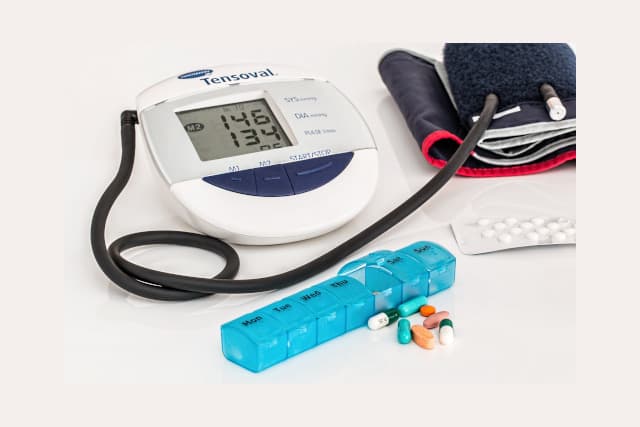Metabolic Syndrome

July 20, 2024
Metabolic syndrome (MetS) is a group of conditions that together raise your risk of coronary heart disease, diabetes, stroke, and other serious health problems. MetS affects 1 in 3 adults in the United States. But it is largely preventable. Making healthy lifestyle changes can lower your chances of developing MetS or the health problems it can cause.
A Modern Health Challenge
MetS is a cluster of conditions that occur together, significantly increasing the risk of heart disease, stroke, and type 2 diabetes. This syndrome is a growing concern in the medical community due to its prevalence and its serious health implications. Understanding MetS, its causes, risk factors, and preventive measures is crucial for maintaining good health and preventing chronic diseases.
A wealth of information is starting to accumulate on the internet related to MetS, including this great short video from Talking with Docs:
What is MetS?
MetS is defined by the presence of at least three of the following five risk factors:
- Abdominal Obesity: Excess fat around the abdomen, typically measured by waist circumference. A waistline of 40 inches or more for men and 35 inches or more for women is considered a risk factor.
- High Blood Pressure: A blood pressure reading of 130/85 mmHg or higher.
- High Blood Sugar: Elevated fasting glucose levels, typically 100 mg/dL or higher.
- High Triglycerides: Elevated levels of triglycerides in the blood, usually 150 mg/dL or higher.
- Low HDL Cholesterol: Low levels of high-density lipoprotein (HDL) cholesterol, often referred to as “good” cholesterol. For men, HDL levels less than 40 mg/dL, and for women, less than 50 mg/dL are concerning.
Causes and Risk Factors
MetS is influenced by a combination of genetic, lifestyle, and environmental factors. Key contributors include:
- Insulin Resistance: The body’s cells become less responsive to insulin, a hormone that regulates blood sugar levels. This can lead to elevated blood sugar and fat storage around the abdomen.
- Obesity: Excess body fat, especially around the abdomen, is a significant risk factor for developing MetS.
- Sedentary Lifestyle: Lack of physical activity contributes to weight gain, insulin resistance, and other metabolic abnormalities.
- Poor Diet: Consuming a diet high in processed foods, sugars, and unhealthy fats can increase the risk of MetS.
- Age: The risk of MetS increases with age.
- Genetics: A family history of type 2 diabetes, hypertension, or other cardiovascular diseases can increase the likelihood of developing MetS.
Health Implications
MetS significantly raises the risk of developing several serious health conditions:
- Cardiovascular Disease: Individuals with MetS are at a higher risk of heart disease, heart attack, and stroke due to factors like high blood pressure, high triglycerides, and low HDL cholesterol.
- Type 2 Diabetes: Insulin resistance and high blood sugar levels can progress to type 2 diabetes if not managed properly.
- Liver Disease: Non-alcoholic fatty liver disease (NAFLD) is commonly associated with MetS due to fat accumulation in the liver.
- Kidney Disease: Hypertension and high blood sugar can damage the kidneys over time, leading to chronic kidney disease.
Prevention and Management
Preventing and managing metabolic syndrome involves lifestyle changes and, in some cases, medication. Key strategies include:
- Healthy Diet: Emphasize breaking the cycle of insulin resistance. This will in all cases involve a focus on whole foods while reducing intake of processed foods and sugars. In my own case, research pointed me to a ketogenic lifestyle and intermittent fasting.
- Regular Exercise: Generally, aim for at least 150 minutes of moderate-intensity exercise, such as brisk walking, biking, or running, per week. My own solution involved five days of high intensity interval training (30 minutes) and three days of weightlifting (60 minutes).
- Weight Management: Achieving and maintaining a healthy weight is crucial. Even modest weight loss can improve insulin sensitivity and reduce risk factors. When overweight, setting appropriate goals for your weight is important. Ideally, your weight goal will coincide with body fat targets that are less than 35% for a woman and less than 25% for a man.
- Regular Check-ups: Monitor blood pressure, blood sugar, and cholesterol levels regularly to detect and manage risk factors early.
- Medications: In some cases, medications may be prescribed to manage high blood pressure, high cholesterol, or high blood sugar.
Conclusion
Metabolic syndrome is a significant health concern that requires attention and action. By understanding the risk factors and implementing healthy lifestyle changes, individuals can reduce their risk and improve their overall health. Early detection and proactive management are key to preventing the serious complications associated with metabolic syndrome.